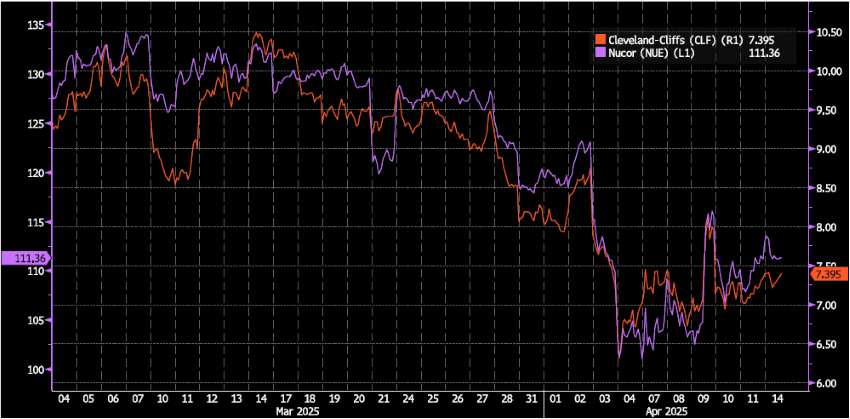To Be, or Not to Be, That Is the…Tariff?
April 17, 2025
.png)
A lot has been said about the Trump administration’s tariff policy or lack thereof. Companies in my coverage area have been fielding countless questions regarding the potential impacts of said tariffs. My concern right now is centered around those companies with outsized exposure to auto production and those with material exposure to China. Automakers have already announced that they are limiting or cancelling specific shipments to the U.S. altogether. While negotiations and exemptions are anticipated, worries remain that the unknown is still the scope of the retaliation against U.S.-domiciled companies.
It's very difficult for these management teams to operate and make decisions in this environment, where policy changes daily. Regarding autos, we’re witnessing a wave of pre-buying ahead of any tariff-related price adjustments to the manufacturer’s suggested retail price (MSRP). Consumers are clearly anticipating higher prices for both new and used cars, as tariffs affect new car prices and the relative lack of supply may drive potential buyers to used cars.
Furthermore, tariffs on imported steel have supported domestic price increases, as many analysts had suggested. However, the benefits of higher prices have yet to be realized. Underlying demand for steel has seemingly stalled as mills haven’t increased production with higher prices. Typically, producers will increase output to capture the benefits of higher steel prices. Bloomberg reports that current U.S. raw steel output roughly translates to capacity utilization of ~70%.1 Cleveland-Cliffs Inc. (CLF), the major U.S. supplier of the steel used in light vehicles, has announced it would idle certain facilities to manage production levels.
Skepticism remains around domestic auto and steel producers benefiting from this tariff regime. I continue to believe automakers are more likely to rationalize production schedules than to source additional domestic steel. As Greg Zappin also highlighted in last week’s Chart of the Week, the first- and second-order effects of tariffs are likely to weigh on operating margins and could be especially painful for more levered credits.
Key Takeaway
It appears that the current tariff regime has not offered an outsized benefit to U.S. companies, as originally expected. Higher prices for both foreign and domestic goods have only acted to temper demand for many consumer products, especially big-ticket items like cars. This has led to a notably weaker outlook and underperformance at domestic steel producers and those companies tied to auto production. It’s worth noting that these are two key industries in focus for the president’s onshoring and reshoring efforts to bring manufacturing jobs stateside. Post-Liberation Day, my skepticism remains.
Sources:
1Bloomberg
This material is for informational use only. The views expressed are those of the author, and do not necessarily reflect the views of Penn Mutual Asset Management. This material is not intended to be relied upon as a forecast, research or investment advice, and it is not a recommendation, offer or solicitation to buy or sell any securities or to adopt any investment strategy.
Opinions and statements of financial market trends that are based on current market conditions constitute judgment of the author and are subject to change without notice. The information and opinions contained in this material are derived from sources deemed to be reliable but should not be assumed to be accurate or complete. Statements that reflect projections or expectations of future financial or economic performance of the markets may be considered forward-looking statements. Actual results may differ significantly. Any forecasts contained in this material are based on various estimates and assumptions, and there can be no assurance that such estimates or assumptions will prove accurate.
Investing involves risk, including possible loss of principal. Past performance is no guarantee of future results. All information referenced in preparation of this material has been obtained from sources believed to be reliable, but accuracy and completeness are not guaranteed. There is no representation or warranty as to the accuracy of the information and Penn Mutual Asset Management shall have no liability for decisions based upon such information.
High-Yield bonds are subject to greater fluctuations in value and risk of loss of income and principal. Investing in higher yielding, lower rated corporate bonds have a greater risk of price fluctuations and loss of principal and income than U.S. Treasury bonds and bills. Government securities offer a higher degree of safety and are guaranteed as to the timely payment of principal and interest if held to maturity.
All trademarks are the property of their respective owners. This material may not be reproduced in whole or in part in any form, or referred to in any other publication, without express written permission.
